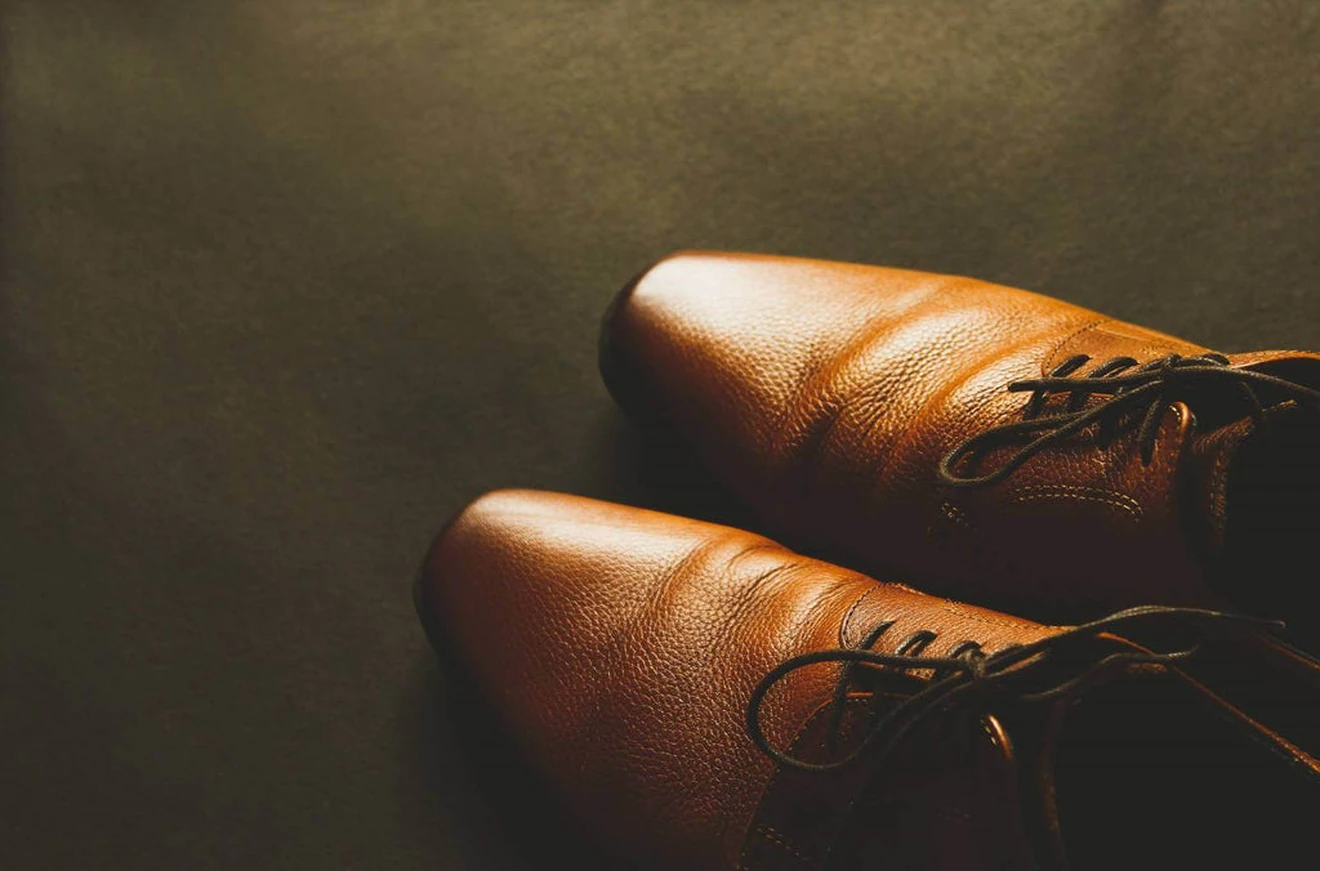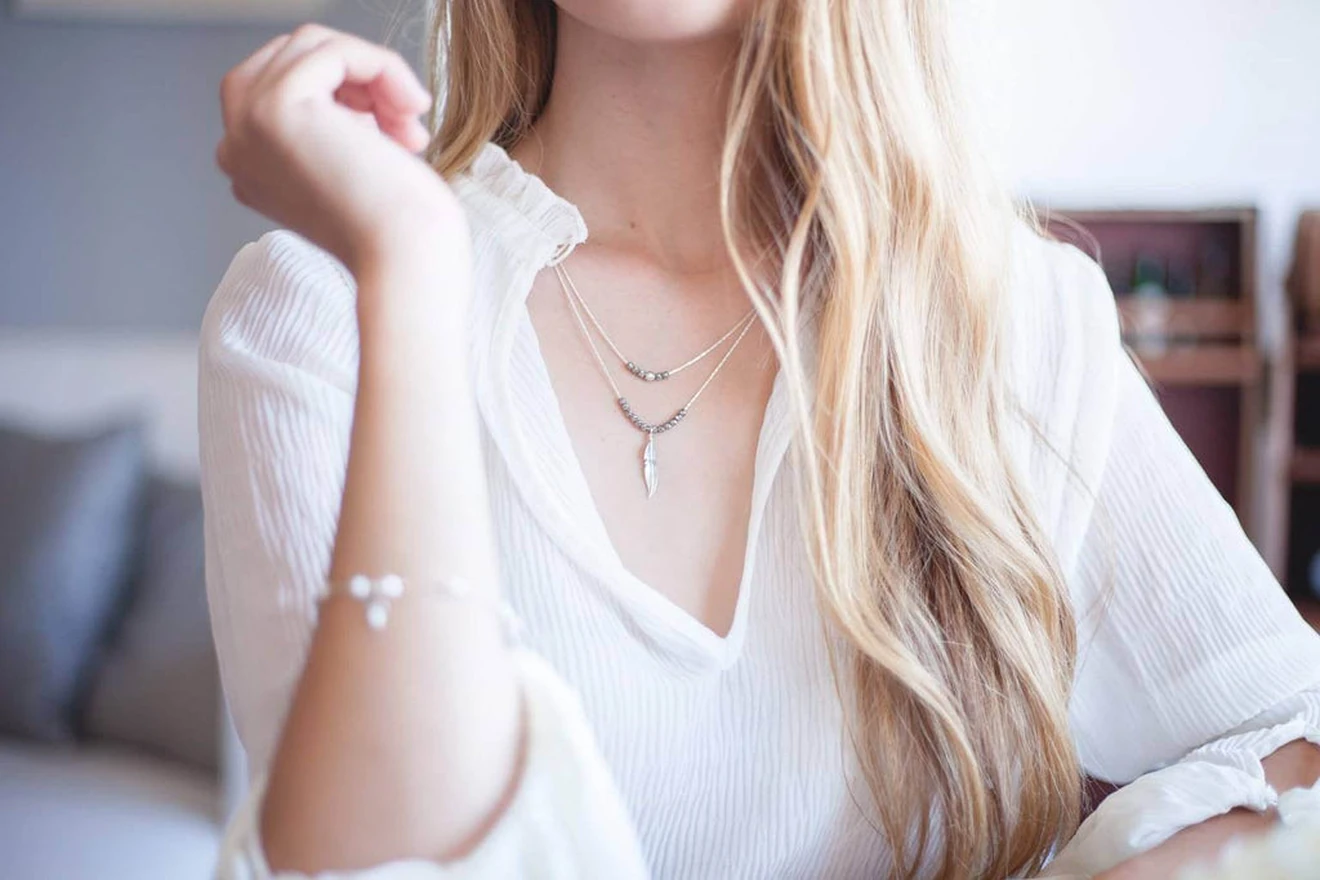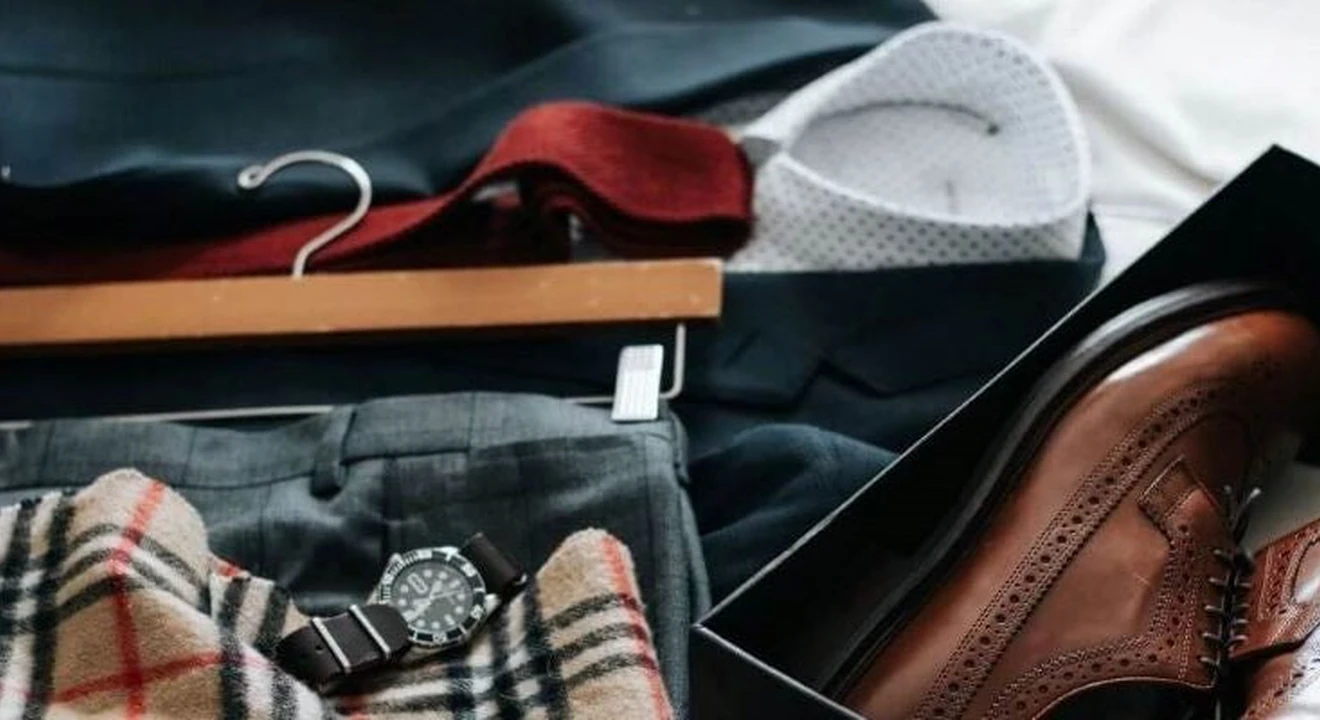If you're fortunate enough to land an interview at a leading consulting firm, then you'll want to make sure that the way you dress doesn't make a bad impression. But don't worry, with a little bit of information the dress code for interviews at consulting firms is actually very straightforward.
So what should you wear to a consulting interview?
The dress code for consulting interviews at firms like McKinsey, BCG, and Bain, is business professional attire. Men should wear a suit in a neutral colour, and women should wear a conservative skirt suit, trouser suit (pantsuit), or similar.
That's the high-level overview, but it leaves several important questions unanswered. For example, what colour shirts and blouses are most appropriate? And should you wear accessories like cufflinks or necklaces? In the following few sections, we'll be addressing each of these questions and more. As a note before we get started, the guidelines shared in this article are specific to Europe and the USA, however we suspect that they will also be helpful in some other regions. Let's get started!
Click here to practise 1-on-1 with MBB ex-interviewers
1. Consulting interview dress code for men ↑
Here we'll focus on the consulting interview dress code for men. There are 5 main categories, and we'll highlight important considerations for each one. Let's begin with the central piece, your suit.
1.1 Suit

Unless a recruiter tells you otherwise, you should plan to wear a suit to all of your consulting interviews. But, not all suits are created equal. And if you want to look the part during your interview, there are a few things you'll need to consider.
First, your suit should be in a neutral colour like grey or black. Navy blue or brown suits may also be appropriate. This might sound obvious but you should any unusual suit colours like red, green or white. Some suits also have unique patterns, like checkered fabric. For your consulting interview, choose plain fabrics with a simple appearance, rather than eye-catching patterns.
In addition, if you don't already have a tailored suit that fits you well, then it's a smart choice to get at least one. If you can afford it, getting a tailored suit will help you make a strong impression. This can also make you feel more comfortable during your interview, which can help you to relax and perform better.
1.2 Shirt

White and light blue button-up shirts are the standard at consulting firms. If you want to look like a consultant during your interview, then wear an unpatterned white or blue shirt with your suit.
Similar to choosing a suit, you should avoid patterns, or keep them to a minimum. It's also a good idea to avoid glossy satin or sateen materials, as these can be too eye-catching.
Lastly, make sure the shirt fits your body well. Wearing a shirt that is baggy around the arms, or too tight around your chest, can make you feel and look uncomfortable.
1.3 Tie

Your tie will be one of the first things an interviewer notices when they meet you, and there are three main things you need to get right:
First, go with a solid colour or a simple pattern (e.g like stripes). Bold ties with dramatic designs can look incredible, but you should probably leave them at home during your consulting interview.
Second, it's important that the colour of your tie complements your shirt and suit. This is an easy mistake to make, but one that will be immediately noticed. An example of a good combination would be a grey suit, light blue shirt, and a dark blue tie. Another good combination would be a navy blue suit, with a white shirt, and a red tie. If you're not sure how to match the colours yourself, then get a friend with a good fashion sense to help you choose.
Finally, the way you tie your tie is also important. There are some wild looking methods, like the Trinity or Eldredge knots. Avoid those for your interview, and go with a standard professional knot, like the Simple knot, or the Windsor knot.
1.4 Shoes

Depending on the suit you wear, you should wear black or brown dress shoes. If you wear a black suit, then black dress shoes are best. With a grey suit, either black or brown shoes can work.
Keep in mind that your shoes should also match the colour of your belt. So if you have a certain shade of reddish-brown shoes, you should wear a belt that is close to the same colour. Since there is less variation in the colour of black shoes and belts, that makes black a safer choice for your interview.
1.5 Accessories

When it comes to men's attire for consulting interviews, there are a few accessories that are sometimes asked about. In particular, candidates wonder if they should wear cufflinks, a pocket square, or a watch. Let's cover each one in order.
First, cufflinks are fine to wear, but we'd gently suggest that you don't. As long as they are subtle and not distracting, cufflinks are fine. But in our experience, most consultants do not wear cufflinks, so wearing them yourself won't impress anyone. Plus, you're more likely to make a mistake with cufflinks, than you are to stand-out with them in a positive way.
Second, pocket squares are similar because they will probably only be noticed if they are distracting or out of place. We'd suggest that you do not wear a pocket square to your consulting interviews.
Third, is your watch. A fashionable analog watch can be a nice accessory for your interviews, particularly if you intend to actually use it to track the time. If you do decide to wear a watch, go for metallic colours like silver or gold, but avoid anything cheap-looking (e.g. plastic digital watches) or flashy (e.g. diamond-studded gold watches).
Next, we'll cover the consulting interview dress code for women.
2. Consulting interview dress code for women ↑
When preparing for a consulting interview, women have a wider variety of options than men do. To help you filter through the options, we've outlined a few guidelines that will help you dress the part. Let's begin with suits and blazers.
2.1 Suits and blazers

One of the key pieces of your consulting interview outfit is a skirt suit, trouser suit (also called a pantsuit), or a blazer. In other words, you should choose an outfit that includes a jacket of some kind.
If you don't want to wear a full suit, a good alternative is to wear a dark knee-length skirt, with a complementary solid-coloured blouse, and a jacket. This outfit provides a similar level of professionalism as a skirt suit, but it may be more comfortable for you.
When selecting a suit or jacket, one of the key questions you should consider is the colour of the material. For women, black, grey, and navy blue are all great choices. It's also important for the design of the fabric to be simple, and you should avoid anything with "loud" patterns.
You may be wondering if you can wear a formal dress to your interview. For example, a professional-looking black dress is a common choice in corporate environments. Depending on the firm you're applying to, this could be appropriate. However, the safest choice for a consulting interview is to always wear an outfit that includes a jacket.
Now let's further discuss your options for a blouse.
2.2 Blouse

In most cases, you will need a blouse or button-up to go with your outfit. As you're choosing your blouse, there are a few things you will want to consider.
Let's start with the colour. Your blouse should be a solid colour, with no (or minimal) patterns. Similar to the dress code for men, the safest choices are neutral colours like white and blue. However, women do have some more flexibility on the particular colour, as long as it's subdued and not flashy.
It's also important that you choose a colour that complements your skirt suit, blazer, etc. You don't need to overthink this part, just make sure nothing clashes. As a bonus option, you can also try to wear a colour that highlights your natural eye or skin colour.
Finally, make sure you get the right fit. Choose a blouse that fits your body well, and is neither baggy nor too tight. As we've mentioned, your attire for a consulting interview should be conservative, so you'll also want to have a modest neckline.
If you consider these colour and fit considerations when choosing a blouse, you'll be one step closer to a winning interview outfit. Next up, shoes.
2.3 Shoes

For shoes, there are 4 main things to consider:
- Comfort
- Style
- Heel
- Colour
First, make sure that the shoes you choose are comfortable, and that you will feel confident wearing them. This is especially important if you are going in for a full day (or half day) of interviews, because you don't want foot discomfort to distract you from performing well in your interviews.
Second, the style of shoes you choose is important. They should be closed-toe, and professional. You should avoid shoes with distracting features, like reflective material or ornaments.
Third, both flats and shoes with a slight heel are perfect. The one you choose can be based on your personal preference. Just leave your high-heels or stilettos at home.
Finally, make sure the colour of your shoes fit with the rest of your outfit. Depending on the colours you've chosen for your other garments, you may have some flexibility with the shoe colour. If you're not sure what to choose, a simple pair of black shoes will often work well with dark coloured suits and blazers.
2.4 Accessories

Lastly, let's cover accessories. You do not need any accessories to complete your interview attire. However, you may choose to wear some for comfort or personal preference.
For example, small necklaces, earrings, and rings are all appropriate when used tastefully. You should just avoid any "statement jewelry" like large hoop earrings, necklaces or bracelets that make noise, etc. Basically, anything that could be distracting to your interviewer, leave at home.
You may also be interested in wearing a watch during your interview. This is fine, and if you usually wear a watch, it can actually make you more comfortable during the interview. Just avoid any watches that look "cheap", like plastic digital watches. Instead, go for a nice analog watch that is metal coloured (like silver or gold), and relatively small in profile.
Now we'll turn our attention to a topic that is important for all consulting interview candidates.
3. Hair and hygiene ↑
In addition to your clothes, hair and hygiene are an important part of how you present yourself during your interviews. In this section, we'll offer a few basic suggestions and a few that you may not have considered. Be sure to do all of these on the day of your interview, before you leave home:
- Shaving and make-up
- Shower and avoid scents
- Clean your mouth
- Style your hair
Let's dig a bit deeper so there is no confusion.
3.1 Shaving and make-up
Men should shave or trim their facial hair. You can't go wrong with the classic clean-shaven look, however, a neatly trimmed beard is also appropriate. And avoid any unusual facial hair, you can save the soul patch and handle-bar mustache for your post-offer party.
For women, whether or not you wear make-up for your interview, is a matter of your personal preference. You do not need to wear make-up for your consulting interview. However, it's also appropriate to use a little concealer, tasteful eye shadow, and subtle lipstick. Just avoid anything bright or distracting.
3.2 Shower and avoid scents
You should shower or take a bath before leaving home for your interview. You've probably already figured that one out, but there are a couple of related things you'll want to keep in mind.
First, make sure you give yourself plenty of time to dry your hair. You don't want to show up to your interview with wet hair, because that could make you come across as rushed or unprepared.
In addition, avoid any strong perfumes or colognes. This is actually one of the bigger mistakes you can make because strong smells can be both distracting and offensive. In order to avoid this blunder, you should either avoid perfumes and colognes altogether or use it very lightly.
3.3 Clean your mouth
You don't want to walk into your interview with bad breath, or with something caught in your teeth. So floss, brush your teeth, brush your tongue, brush the roof of your mouth, and use mouthwash. The whole nine yards.
3.4 Style your hair
Finally, you should style your hair for your interview. You should make sure you start with well-trimmed hair, and an appropriate hairstyle (no mohawks please). As a result, it can be a good idea to get a haircut a few days prior to your interview.
On the day of your interview, you should also do your hair. This looks different for men and women. For men with short or shaved hair, just make sure your hair is evenly trimmed. For men with longer hair, you should comb it neatly. If you like, you can also use a little hair gel, but keep it conservative.
For women, you can either wear your hair down naturally or tie it up in a bun or ponytail. Whichever you choose, you should brush your hair, and arrange it neatly. Depending on your hairstyle, you may also want to straighten your hair to further polish your look.
Next, we'll briefly touch on what to carry with you when you go to your interview.
4. What to carry ↑
When you go to the interview location, you want to be well prepared, but you don't want to show-up juggling an assortment of miscellaneous items. This can easily give the impression that you are unorganised.
So, you should first consider the location and duration of your interview(s). If you only have one interview (not a super day of multiple interviews), then it can be helpful to travel light. For example, just take a single leather padfolio, containing a notebook, pen, and extra copies of your resume/cover letter.
If you know you'll need to carry a few other things, or if you have a longer day of interviews, then a professional-looking purse, messenger bag, or briefcase are your best choices. A quality backpack is sometimes okay, but the other options mentioned are safer choices.
Now, let's turn to our final section, which will provide some additional tips for making a great impression at your consulting interview.
5. Additional tips for consulting interview attire ↑
There are a couple of additional tips that you should follow when choosing what to wear to your consulting interview. Let's dig into them here:
5.1 Follow recruiter instructions
First, be sure to follow recruiter instructions. If your HR contact at the consulting firm tells you to dress business professional, then do it. If they say business casual, dress accordingly. Recruiters will sometimes tell you the specific dress code in advance, and they're not going to try to trick you into underdressing or overdressing.
If the dress code hasn't been specified for your interviews, you should also feel free to ask your recruiter directly. They get these questions all the time and will generally be happy to answer.
However, you should know that the dress code instructions provided by recruiters are usually very broad. And they'll likely just tell you that it's business professional or business casual. This is helpful, but there is a wide spectrum within each of those standard categories of attire. That's where the rest of this guide will be helpful.
5.2 Avoid standing out
We've eluded to this throughout the article, but it's worth re-stating. You should dress conservatively for consulting interviews, and avoid any fashion choices that would stand-out. Your interviewers will typically be consulting managers and partners, and they will be far more interested in your analytical and communication skills than in your wardrobe.
Your attire will probably only be noticed if you've dressed poorly (e.g. underdressed, overdressed, too flashy, etc.). Plus, coming dressed inappropriately can show a lack of social awareness, which is not a good sign for a client-facing consulting role.
5.3 Dress for comfort
At the end of the day, you're probably going to perform your best when you're comfortable. And for consulting interviews, the most important thing is how you perform. As a result, when you are choosing your interview outfit, be intentional about choosing something you feel comfortable wearing.
If you find professional attire generally uncomfortable, then you might just not be used to it. A great way for you to become more comfortable in your interview clothes, is to wear them while preparing with mock interviews or coaching calls.
5.4 Don't overthink it
Last but not least, don't overthink the dress code. Choose a conservative outfit, and then focus on your interview preparation. Your interviewers are primarily interested in your qualifications, how you communicate, and how you solve case questions.
6. Preparing for your interviews
We've coached more than 15,000 people for interviews since 2018. There are essentially three activities you can do to practice for interviews. Here’s what we've learned about each of them.
6.1 Learn by yourself
Learning by yourself is an essential first step. We recommend you make full use of the free prep resources on this consulting blog and also watch some mock case interviews on our YouTube channel. That way you can see what an excellent answer looks like.
Once you’re in command of the subject matter, you’ll want to practice solving lots of cases. But by yourself, you can’t simulate thinking on your feet or the pressure of performing in front of a stranger. Plus, there are no unexpected follow-up questions and no feedback.
That’s why many candidates try to practice with friends or peers.
6.2 Practise with peers
If you have friends or peers who can do mock interviews with you, that's an option worth trying. It’s free, but be warned, you may come up against the following problems:
- It’s hard to know if the feedback you get is accurate
- They’re unlikely to have insider knowledge of interviews at your target company
- On peer platforms, people often waste your time by not showing up
For those reasons, many candidates skip peer mock interviews and go straight to mock interviews with an expert.
6.3 Practise with experienced MBB interviewers
In our experience, practising real interviews with experts who can give you company-specific feedback makes a huge difference.
Find a consulting interview coach so you can:
- Test yourself under real interview conditions
- Get accurate feedback from a real expert
- Build your confidence
- Get company-specific insights
- Learn how to tell the right stories, better.
- Save time by focusing your preparation
Landing a job at a top consulting company often results in a $50,000 per year or more increase in total compensation. In our experience, three or four coaching sessions worth ~$500 make a significant difference in your ability to land the job. That’s an ROI of 100x!















